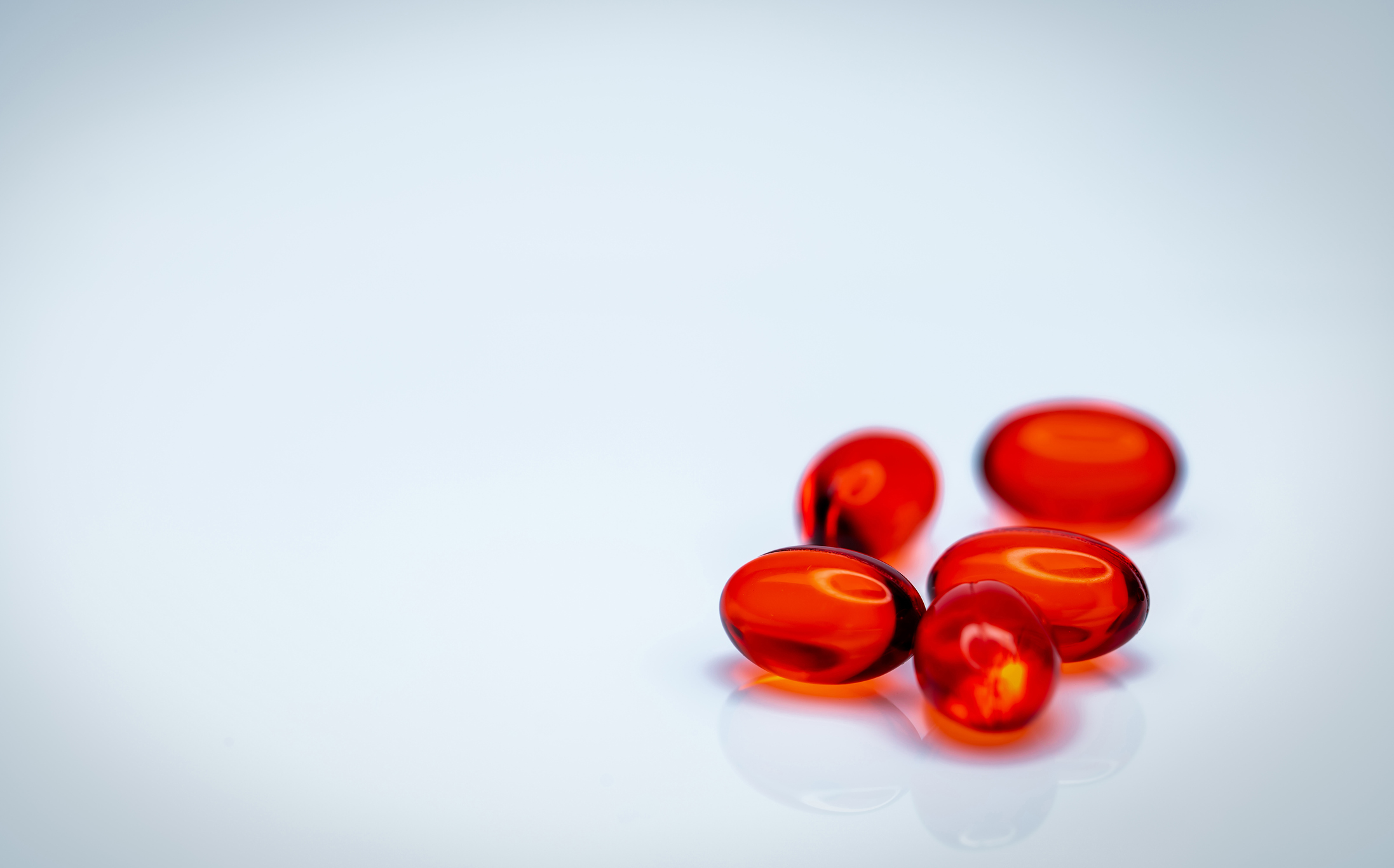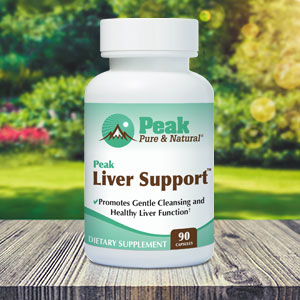Get Easy Health Digest™ in your inbox and don’t miss a thing when you subscribe today. Plus, get the free bonus report, Mother Nature’s Tips, Tricks and Remedies for Cholesterol, Blood Pressure & Blood Sugar as my way of saying welcome to the community!
Astaxanthin: The antioxidant that challenges aging

There are a lot of reasons to choose krill oil over regular fish oil. Its omega-3 fatty acids are more easily absorbed, it doesn’t leave the same fishy burps or aftertaste and it’s cleaner than fish oil.
But the most compelling reason has to do with one special nutrient…
Unlike fish oil, krill oil also contains astaxanthin, a powerful antioxidant that’s many times more potent than vitamin C, beta-carotene and vitamin E.
Astaxanthin not only pumps up the omega-3 benefits of krill oil, it gives the body’s aging processes quite a challenge, in part because of its powerful impacts on the body’s most vital systems and organs.
So let’s dive into what this amazing antioxidant is, where it comes from and what the research says about it…
What exactly is astaxanthin?
Astaxanthin is a red-colored ketocarotenoid first identified and isolated in 1938 by scientist Richard Kuhn, who discovered it while studying lobsters to find out what gave them their color. Kuhn won the 1938 Nobel Prize in Chemistry for his work on carotenoids and vitamins.
Astaxanthin is found mainly in the algae Haematococcus pluvialis and the yeast Xanthophyllomyces dendrorhous, both of which produce it naturally. The algae are a food source for a number of sea creatures, and astaxanthin is what turns their shells and flesh pink.
Because krill feed almost exclusively on these algae, they contain higher amounts of astaxanthin than other marine animals like shrimp, salmon, trout and lobster.
How astaxanthin works in the body
As a carotenoid, astaxanthin is fat-soluble and has antioxidant properties that help protect your cells from free radicals and oxidative stress.
Astaxanthin acts by neutralizing reactive oxygen species (ROS) on the inner and outer layers of cell membranes. This keeps ROS from doing damage to the basic building blocks of the cell including DNA, protein and lipids.
Here are some specific ways astaxanthin supports your overall health….
Astaxanthin and inflammation
Like many antioxidants, astaxanthin may help to reduce inflammation. But astaxanthin’s specific ability to neutralize ROS helps reduce proteins that can cause inflammatory diseases such as celiac disease, rheumatoid arthritis, heart disease and diabetes.
Not only does astaxanthin fight inflammation, it also assists our mitochondria, the energy powerhouses located in our cells. Having mitochondria functioning at their best gives our bodies optimal energy and helps it operate at peak performance.
By reducing inflammation, astaxanthin supports improved mitochondrial performance, as well as providing antioxidant support to ward off free radical damage.
Studies show astaxanthin’s anti-inflammatory capabilities can help with exercise recovery by protecting the body from overproduction of free radicals, inhibiting the production of excess lactic acid in the muscles, reducing fatigue and improving muscle strength.
Astaxanthin and immune system health
Along with fighting inflammation, astaxanthin can boost your immune system by helping to activate white blood cells known as T-cells as well as natural killer cells. T-cells attack malicious cells based on antigen markers, while natural killer cells work even faster to stop foreign invaders from harming your health.
But as important as it is for an immune system to be reactive — it’s just as important not to be overactive to avoid an autoimmune response. Astaxanthin’s anti-inflammatory properties help modulate a balanced immune response.
Astaxanthin and brain health
Carotenoids like astaxanthin help support good brain health by reducing the risks for neurodegenerative conditions like Alzheimer’s disease, Parkinson’s disease, amyotrophic lateral sclerosis and cognitive impairment.
But one advantage astaxanthin has is that its molecular structure is small enough to allow it to cross the blood-brain barrier. This gives it added ability to protect the brain and possibly even slow the onset rate of cognitive disorders.
Astaxanthin may also literally grow your brain. According to one study, astaxanthin can promote the growth of new brain cells in the hippocampus, the area of the brain responsible for learning and memory. Researchers also found that those new cells had even greater learning and memory capacity.
Astaxanthin and heart health
Like omega-3s, astaxanthin has great benefits for your heart, including blood pressure. In one double-blind placebo-controlled study, postmenopausal women who took astaxanthin experienced a 7 percent reduction in systolic blood pressure (the top number) and a 4 percent reduction in diastolic pressure (the bottom number).
Astaxanthin can also help reduce LDL, the “bad” kind of cholesterol, and raise HDL, or “good” cholesterol. And since astaxanthin works in tandem with omega-3s in krill oil, you get a greater cholesterol-lowering benefit than with regular fish oil.
Results of one study showed patients who took 1 to 1.5 grams of krill oil a day showed a significantly higher decrease in bad cholesterol than patients who took three times that dose in fish oil.
Astaxanthin and blood sugar problems
Astaxanthin could be useful in preventing diabetic nephropathy, a disorder of the kidneys. According to one study in mice, the antioxidant activity of astaxanthin helped lower blood sugar, reduce stress on the kidneys and prevent renal cell damage.
Another study showed astaxanthin protected cells against the oxidative damage caused by high blood sugar levels. This damage can cause several complications in diabetics, including kidney disease, nerve damage (neuropathy) and vision problems (retinopathy).
Astaxanthin and eye health
While chemically astaxanthin shares some similarities with other carotenoids (like beta-carotene), it’s more closely related to oxygenated xanthophylls like lutein and zeaxanthin, both known for improving eye health. And like these two nutrients, astaxanthin can also help protect your vision.
But here astaxanthin has an extra edge, like it does in the brain…
Not only can the antioxidant cross the blood-brain barrier, but the same process holds for the retinal barrier.
In studies of patients with age-related macular degeneration (AMD), supplementing astaxanthin and other carotenoids were found to significantly improve retinal electrical outputs, which helps slow AMD damage.
Glaucoma involves an increase in the pressure of fluid inside the eyeball that causes oxidant damage and loss of blood flow and eventually results in retinal cell death. In eyes with experimentally induced glaucoma, astaxanthin restored these retinal parameters to normal.
Another study showed that astaxanthin supplementation resulted in a 46 percent reduction of eye strain caused by visual display terminals.
Astaxanthin and skin health
Astaxanthin appears to act as a sort of natural internal sunscreen by helping to protect your skin from damage by the sun’s ultraviolet (UV) rays. The nutrient builds up in the top two layers of skin, helping to block UV penetration and reduce existing sun damage like wrinkles and lack of elasticity.
Astaxanthin and longevity
Researchers have found that astaxanthin can significantly increase the activation of the so-called “longevity gene” located in our heart tissue. In fact, animals in one study that were fed large amounts of astaxanthin had a 90 percent increase in the activation of this gene.
Healthy aging is a hot topic in discussions surrounding lifespan. This is the intersection referred to as healthspan. Numerous studies have shown that supplementing astaxanthin appears most beneficial for many of the aging processes and organs most challenged by aging including the brain, eyes and skin, not to mention energy levels.
To supplement or not to supplement
There’s no doubt that seafood is a rich source of astaxanthin — but it has to be the right kind. Wild salmon contains between 26 and 38 mg of astaxanthin per kilogram, while farmed salmon only contains 6 to 8 mg per kilogram.
Some experts recommend getting about 3.8 mg of astaxanthin a day, the amount found in roughly 5.8 ounces of salmon. However, others say a therapeutic dose of astaxanthin is anywhere from 4 to 12 milligrams a day, which makes it difficult to get through diet alone.
That’s why supplementing with astaxanthin-rich krill oil is a great alternative. Just remember, because it’s a fat-soluble carotenoid, take it after a meal for best absorption in the body.
Sources:
Health Benefits of Astaxanthin — Nourish by WebMD
Health effects of astaxanthin have been long studied — Natural Products Insider
Beneficial and Detrimental Effects of Reactive Oxygen Species on Lifespan: A Comprehensive Review of Comparative and Experimental Studies — Frontiers in Cell and Developmental Biology
Biological and neurological activities of astaxanthin (Review) — Molecular Medicine Report
Astaxanthin: Sources, Extraction, Stability, Biological Activities and Its Commercial Applications—A Review — Marine Drugs
Clinical Applications of Astaxanthin in the Treatment of Ocular Diseases: Emerging Insights — Marine Drugs
The Microalgae-Sourced Carotenoid That Delivers Broad Spectrum Antiaging Benefits — Clinical Education













